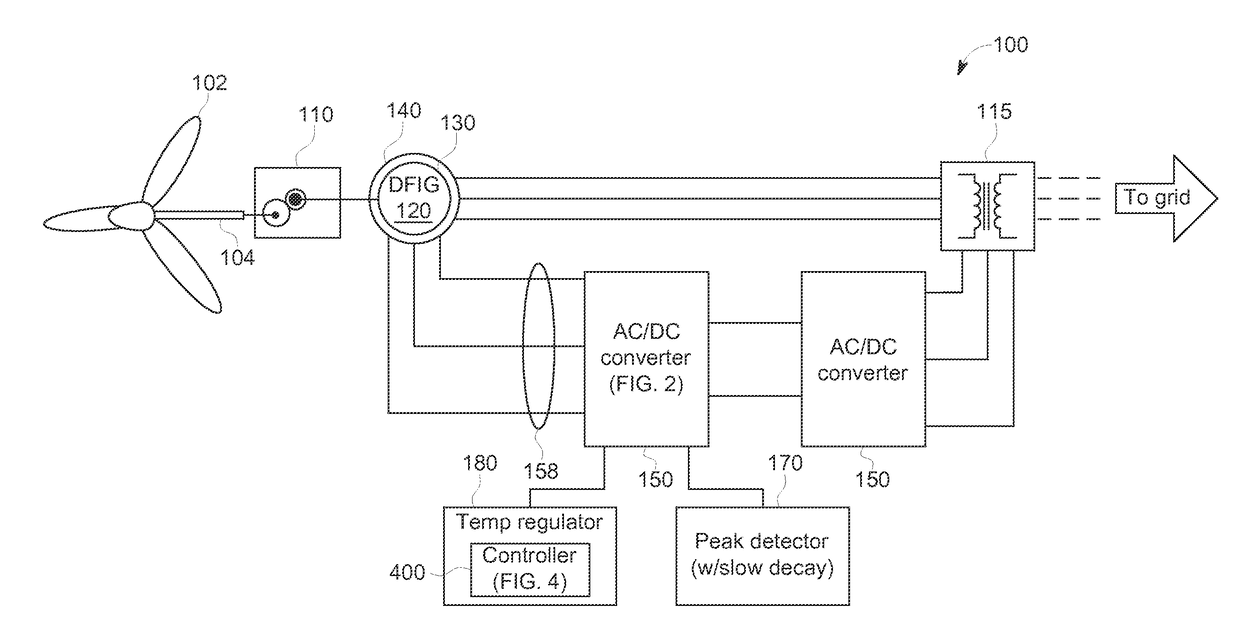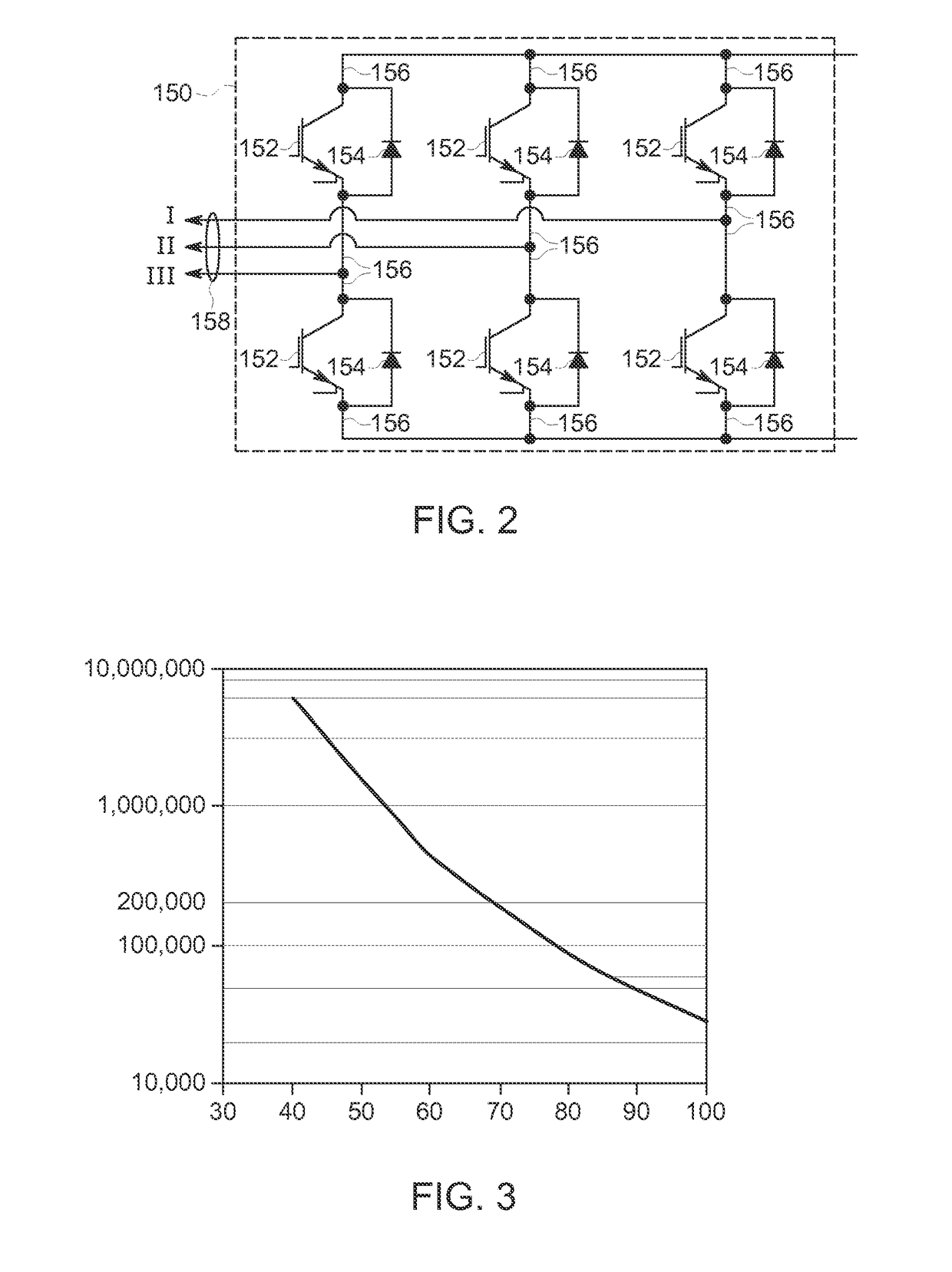Life of a semiconductor by reducing temperature changes therein via reactive power
a technology of reactive power and semiconductor, which is applied in the direction of power conversion systems, electrical equipment, ac network circuit arrangements, etc., can solve the problems of increased heat generation, more losses, and increased heat production, and achieve accurate identification of temperature changes, increase the useful life of the semiconductor, and facilitate the effect of reducing the temperature change in the semiconductor
- Summary
- Abstract
- Description
- Claims
- Application Information
AI Technical Summary
Benefits of technology
Problems solved by technology
Method used
Image
Examples
Embodiment Construction
[0008]Given the aforementioned deficiencies, a need exists for systems and methods that prolong the life of a semiconductor by preventing crack formations due to drastic temperature changes during switching.
[0009]In the present technology, to keep IGBT heat losses from dropping in proportion to reductions in renewable power production, the converter may circulate reactive power within the system such that the net reactive power to or from the grid is unaffected but the current within an IGBT bridge is held more constant. Circulating reactive power keeps current magnitude from dropping in proportion to power. Specifically, the converters operate at a reduced power factor than without circulation of reactive power. A doubly fed induction generator (DFIG) has a topology configured to feed reactive power to the grid directly from the line converter or indirectly by the rotor converter via the generator. Thus, one IGBT bridge can be controlled to output more reactive current and another ...
PUM
 Login to View More
Login to View More Abstract
Description
Claims
Application Information
 Login to View More
Login to View More - R&D
- Intellectual Property
- Life Sciences
- Materials
- Tech Scout
- Unparalleled Data Quality
- Higher Quality Content
- 60% Fewer Hallucinations
Browse by: Latest US Patents, China's latest patents, Technical Efficacy Thesaurus, Application Domain, Technology Topic, Popular Technical Reports.
© 2025 PatSnap. All rights reserved.Legal|Privacy policy|Modern Slavery Act Transparency Statement|Sitemap|About US| Contact US: help@patsnap.com



